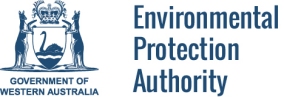The purpose of this guideline is to communicate how and when the Greenhouse Gas Emissions factor is considered by the Environmental Protection Authority (EPA) in the environmental impact assessment (EIA) process.
Background
The EPA published the first Environmental Factor Guideline – Greenhouse Gas Emissions (EFG-GHG) in April 2020, with a further revision published in April 2023.
In October 2024, the State Government updated its Greenhouse Gas Emissions Policy for Major Projects to allow certain proposals in WA to be regulated under the Commonwealth’s Safeguard Mechanism and not by the State.
The EPA notes the Safeguard Mechanism presents an opportunity to streamline information requirements to support the EPA’s consideration, and that the Safeguard Mechanism is likely to meet the EPA’s expectations for this factor in most cases.
The EPA has revised its EFG-GHG to ensure compatibility with existing frameworks and outline how and when the GHG environmental factor will be considered by the EPA in the environmental impact assessment process.
Revised Environmental Factor Guideline – Greenhouse Gas Guidelines (EFG-GHG)
The current guideline (November 2024):
- describes why the EPA has published the guideline and how they should be applied
- defines greenhouse gases (GHG) and describes the different scopes of emissions
- outlines the international and national framework and how this factor links with other environmental factors
- outlines when the EPA may apply this guideline and the EIA considerations for this factor
- provides a summary of the information required by the EPA to undertake EIA related to this factor (including consideration of scope 1, 2 and 3 emissions)
- outlines expected information from proponents on how greenhouse gas emissions will be avoided, reduced and mitigated
- outlines expectation of EPA decision-making
- identifies issues commonly encountered by the EPA during EIA of this factor
